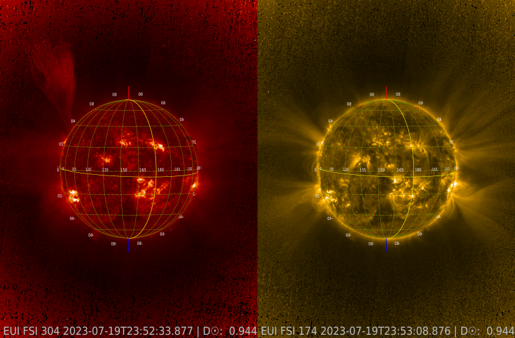Late on 18 July, big sunspot group NOAA 3363 had finished its transit of the solar disk and rotated over the Sun's southwest limb (clip - SDO/HMI). This big sunspot had been dominating our view of the Sun during the previous 2 weeks, gradually increasing its flaring activity. On 18 July it was the source of the first moderate solar radiation storm of the ongoing solar cycle (see the STCE newsflash). Though this active region was now on the farside of the Sun, it still produced some M-class flares on 19 July. Solar activity continued to be enhanced, also due to some filament eruptions.
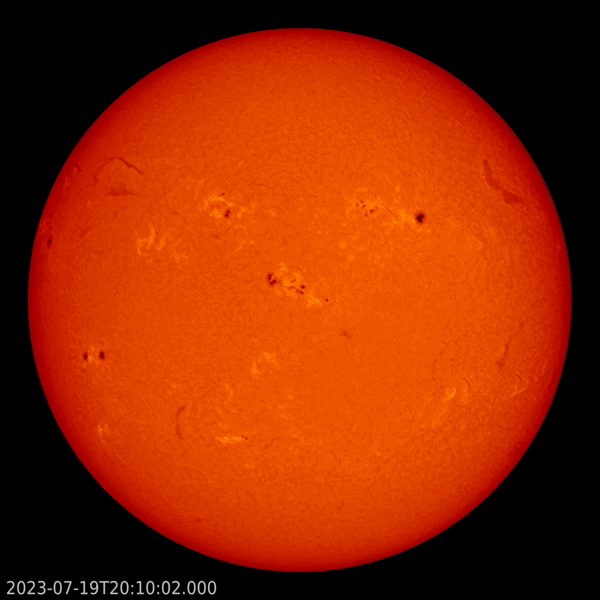 |
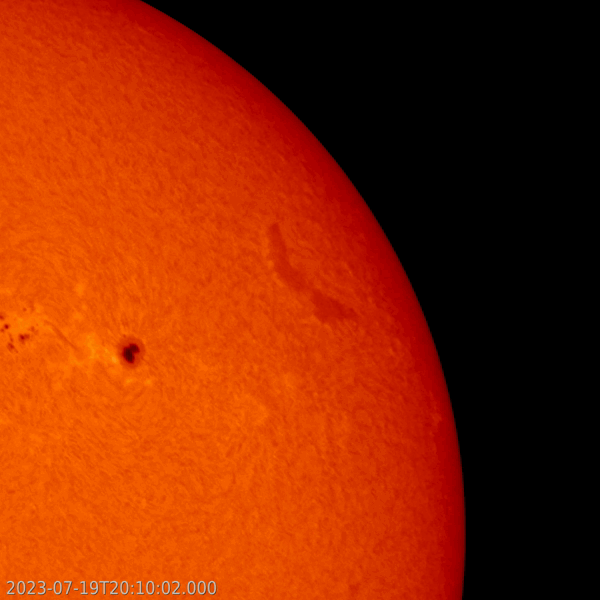 |
One of the more impressive filament eruptions took place late on 19 July, when a rather short fragment erupted near the northwest solar limb. Solar filaments are clouds of charged particles ("plasma") above the solar surface squeezed between magnetic regions of opposite polarity. Being cooler and denser than the plasma underneath and their surroundings, they appear as dark lines when seen on the solar disk and as bright blobs when seen near the solar limb (then they are called "prominences"). Special filters are required to observe these features, and one such a filter is the Hydrogen-alpha (H-alpha) line in the red part of the solar spectrum at 656.28 nm. H-alpha images above are from the GONG H-alpha Network. This compilation shows the filament about an hour before the eruption, during the eruption, and an hour afterwards when it was all gone.
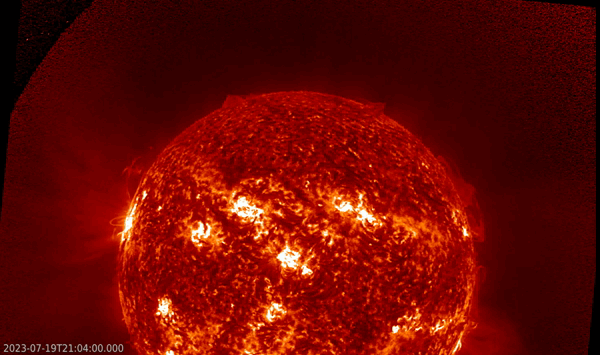
Despite being a small filament, the eruption was truly spectacular in extreme ultraviolet (EUV) imagery such as in GOES/SUVI 304 showing the Sun at temperatures near 80.000 degrees (images above). Similar to the 1974 movie "The Towering Inferno", it looked like a skyscraper engulfed in flames, only -around 23:12UTC- to tower at least twice the Earth-Moon distance over the solar surface - that's a whopping 750.000 km! This pillar of fire was still growing and could be tracked throughout SUVI's field of view. The jet-like structure to the lower-right is unrelated, and due to activity from spotless active region NOAA 3370 near the Sun's southwest limb.
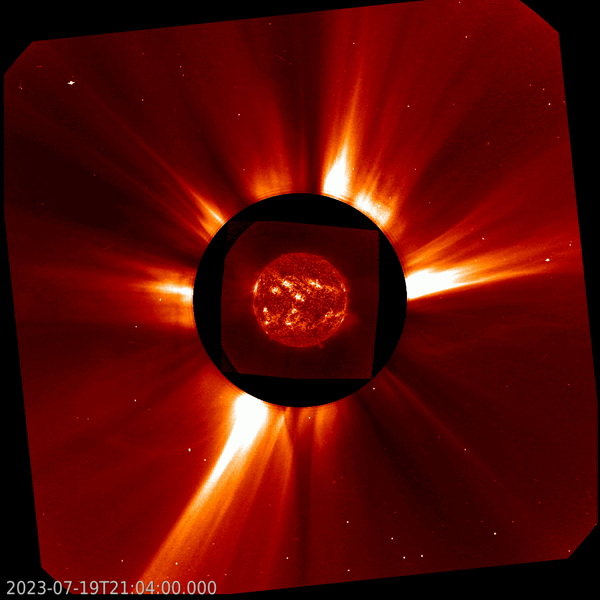
In coronagraphic images, the associated coronal mass ejecyion (CME) became first visible in SOHO/LASCO C2 images around 23:12UTC. CACTus gave a plane-of-the-sky speed for this CME around 975 km/s. Note that in the imagery above, the coronagraphic images are in white light, whereas SUVI 304's overlaid imagery shows the ejected material in EUV. Also Solar Orbiter, currently residing on the Sun's farside as seen from Earth (map), was able to catch a glimpse of the expanding plume with its Full Sun Imager (30.4 nm; FSI 304) - as shown below. The other image is in 17.4 nm (FSI 174) near temperatures of about 1 million degrees, but shows no trace of the eruption. This most likely indicates the ejected material consisted mainly of "cold" material not showing up in the "hotter" 17.1 nm passband. Note that the thick yellow line in the grid marks the meridian which is oriented 180 degrees away from Earth.
